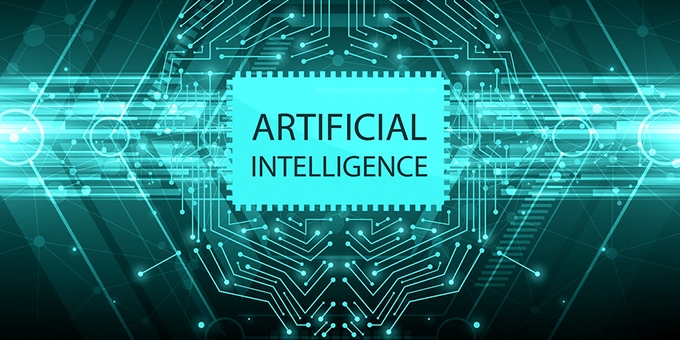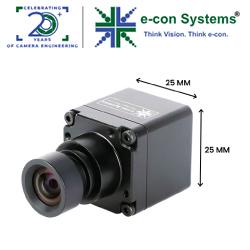There needs to be standards by which developers are held accountable for the use and impact of their A.I. technology. Appropriate laws need to be written to govern the use of A.I. And most importantly, A.I. is a tool not a replacement for humans.
 A.I. -Rules, Learning and Reason
A.I. -Rules, Learning and Reason

Len Calderone for | RoboticsTomorrow
Ten years ago, what was infeasible is now done on a regular basis using artificial intelligence. Machine intelligence or A.I. is a decision-making system, which encompasses the collection and organization of data, selecting, optimizing and testing of the concept, while authenticating and managing the subsequent solution. A.I. allows the full automation of the processes needed to get the results.
A.I. could go through an amazing number of different variations before deciding how the input data would look like. There is nothing new to design, everything is available through established open-source programs. Using the different functions, new entirely automated workflows can be created. Once the workflows are automated, machine intelligence takes over.
.png)
Before A.I. can be fully utilized, there must be rules. Isaac Asimov said it all when he wrote, “A robot may not injure a human being or, through inaction, allow a human being to come to harm. A robot must obey the orders given it by human beings except where such orders would conflict with the First Law. A robot must protect its own existence as long as such protection does not conflict with the First or Second Laws.”
Today, there is great concern that we might go too far with A.I. Elon Musk stated, “Mark my words — A.I. is far more dangerous than nukes.”
There is one rule that could resolve a lot of problems as well—thought process transparency. What this means is that any time an A.I. makes an independent decision, it must be completely open and honest when asked what its intentions are and explain the rationale it used. With this rule, we could ask the A.I. if it’s trying to take over the world or not and get a truthful reply.
Companies should be transparent about the design, intention and use of their A.I. technology. Developers should endeavor to avoid bias in A.I. There needs to be standards by which developers are held accountable for the use and impact of their A.I. technology. Appropriate laws need to be written to govern the use of A.I. And most importantly, A.I. is a tool not a replacement for humans.
A computer, mimicking human behavior is A.I., whereas machine learning is a subset of A.I., and comprises the procedures that enable computers to reckon things from the data and deliver A.I. functions.
.png)
CC0 Public Domain
The word Artificial Intelligence comprises of two words “Artificial” and “Intelligence.” Something made by a human is artificial and intelligence means the ability to understand or think. A.I. is not a system, but it is employed in a system. Machine Learning is the method where a machine can learn by its own without being programmed. It is an application of A.I. that provides a system the ability to automatically learn and improve from experience.
A.I. works as a computer program that does smart work, whereas machine learning is a simple concept machine that takes data and learns from that data. The goal of A.I. is to imitate natural intelligence to solve complex problems, while the goal of machine learning is to learn from data on a certain task and maximize the performance of the machine on this task. A.I. is decision making, while machine learning allows a system to learn new things using data input. AI guides to intelligence or wisdom. Machine learning leads to knowledge.
Deep learning is a subset of machine learning, which functions the same way but has different capabilities. Machine learning becomes better progressively but still needs some guidance. If a machine learning model returns an erroneous prediction then the programmer needs to handle the problem but in the case of deep learning, the model handles the problem itself. Machine learning and deep learning is a way to accomplish A.I.
A.I. has moved from software that relies on many programing rules to systems that learn through trial and error. Machine learning is growing exponentially thanks to powerful computers, big data, and advances in algorithms called neural networks. These networks are assortments of simple computing elements, modeled on neurons in the brain, that create strong or weak links as they consume data.
Humans are reasonably good at relational reasoning—that which uses logic to link and relate to places, sequences, and other things. Statistical and symbolic artificial intelligence are slow to acquire similar capacities. Statistical A.I. (machine learning) is excellent at pattern recognition, but not at using logic, while symbolic A.I. can reason using predetermined rules, but it’s not very good at learning as it goes.
Reasoning allows A.I. to extract essential information from large sets of structured and unstructured data, perform clustering analysis, and use statistical extrapolation in a way that starts to come close to human reasoning.
Interaction permits A.I. technologies to use computer vision to see, conversational A.I. to communicate, and computational linguistics to read, with the goal of getting closer to human level perception.
Assisted learning is the most common form of learning, where A.I. is presented with defined inputs and outputs in a sample set of data and then reverse engineers the algorithm in between. Unassisted learning is when A.I. is presented with a set of documents or data and then figures things on its own. This can be done with a very limited number of files. A.I. is able to define rudimentary meanings of the symbols in an information system without human input.
Reinforcement learning is when a machine is presented with a set goal and then allowed to do what it needs to puzzle out ways to most successfully attain that goal, such a figuring out how to win a game.
Led by Google and Facebook in the United States and Baidu and Tencent in China, A.I. is producing a technological revolution that is different from other tech revolutions in the past. Control of A.I. and machine learning represent an intensity of geopolitical power that will reshape virtually every area of human activity from social and economic to political and military.
.png)
By using reasoning, interaction, and learning, A.I. is defined so that it can yield tangible applications. What is possible for artificial intelligence is represented by the connection of these three fields.
For further information:
-
https://www.cray.com/sites/default/files/Tractica-Getting%20Started%20with%20AI%20White%20Paper.pdf
-
https://www.sas.com/en_us/insights/analytics/what-is-artificial-intelligence.html
-
https://www.intel.com/content/dam/www/public/us/en/documents/white-papers/ai-poc-whitepaper.pdf
The content & opinions in this article are the author’s and do not necessarily represent the views of RoboticsTomorrow
Featured Product

